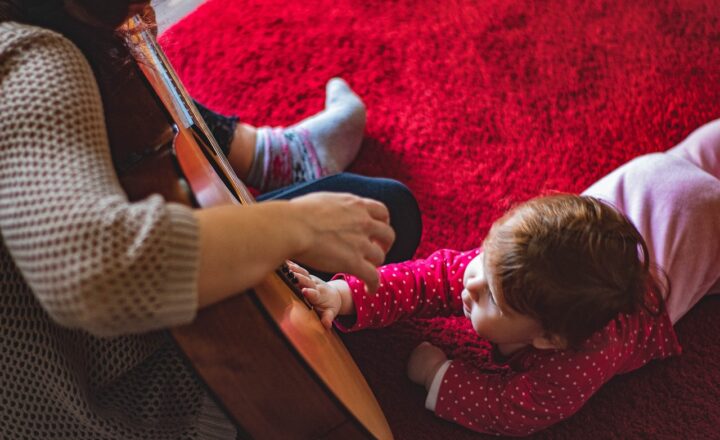
Friendships are an essential part of childhood development. They not only teach children about social interactions but also offer them the emotional support they need as they grow. However, navigating friendships can be challenging for many kids, leading to scenarios of confusion, disappointment, and sometimes even heartache. As parents and caregivers, it’s crucial that we equip our children with the tools they need to build and maintain healthy friendships. In this article, we will explore practical tips and strategies for helping your child navigate friendships effectively.
1. Understanding the Importance of Friendships
Friendships provide a sense of belonging and acceptance for children. They learn essential social skills, including communication, empathy, and conflict resolution, all of which are critical for their emotional development. The friends they make during their childhood can influence their identity and self-esteem.
– **Emotional Support:** Friends can offer comfort in times of distress, helping children cope with challenges.
– **Social Skills Development:** Interacting with peers teaches children how to communicate effectively and navigate social dynamics.
– **Building Confidence:** Positive relationships can boost a child’s confidence and self-worth.
Understanding why friendships matter lays the foundation for guiding your children through their social circles.
2. Teach Social Skills
Social skills are the building blocks of friendships. Here are some key skills to focus on:
– **Listening:** Encourage your child to practice active listening, which involves paying attention to what others are saying and responding thoughtfully.
– **Sharing and Cooperation:** Teach your child the importance of sharing and working together, which are fundamental aspects of friendship.
– **Expressing Emotions:** Help them articulate their feelings appropriately, enabling them to build connections through empathy.
– **Problem-Solving:** Discuss scenarios where conflicts might arise and guide them through possible solutions.
Role-playing can be an excellent technique for your child to practice these skills in a safe environment.
3. Encourage Open Communication
Create an open space for conversation about friendships. Here are some strategies:
– **Ask Questions:** Encourage your child to share their thoughts about their friends by asking open-ended questions. For example, “What do you and your friend like to do together?”.
– **Share Experiences:** Relate your childhood experiences with friendships, sharing both the joys and challenges.
– **Discuss Emotions:** Teach your child to express how they feel about specific friendships, helping them verbalize both positive and negative emotions.
Regular conversations will help your child feel comfortable discussing their friendships with you, paving the way for guidance when needed.
4. Monitor Friendships
While fostering independence is essential, keeping an eye on your child’s friendships can help you identify any potential issues:
– **Observe Interactions:** Pay attention to how your child interacts with their friends and how these friendships affect their emotions.
– **Meet Their Friends:** Get to know your child’s friends by inviting them over or attending social events together.
– **Be Cautious of Toxic Relationships:** Help your child recognize friendships that may be harmful or draining, providing support in reevaluating those connections.
Regular check-ins can help you stay informed about your child’s social landscape.
5. Teach Conflict Resolution
Conflicts are natural in any relationship. Teaching your child how to address disputes with friends positively can help them build resilience:
– **Acknowledge Feelings:** Encourage your child to acknowledge their feelings during conflicts instead of suppressing them.
– **See Different Perspectives:** Help them understand the importance of seeing things from their friend’s point of view.
– **Offer Solutions:** Discuss potential solutions to the conflict and the thought process behind them.
– **Forgiveness:** Teach your child the value of forgiveness to mend friendships post-conflict.
With these tools, your child will feel empowered to navigate disagreements respectfully and constructively.
6. Foster Inclusivity
Help your child understand the significance of being inclusive rather than exclusive:
– **Respect Differences:** Teach them to appreciate and respect differences. Every friend can contribute uniquely to their lives.
– **Encourage New Friendships:** Motivate your child to make new friends and include others in their games and activities.
– **Model Inclusivity:** Demonstrate inclusive behavior in your own social interactions to set an example for your child to follow.
Instilling an understanding of inclusivity can modify how children view their relationships, resulting in healthier friendships.
7. Be a Role Model
Children often model their behavior after their parents. Be a positive role model in your social interactions:
– **Demonstrate Healthy Friendships:** Show your child how to maintain healthy friendships through your actions and words.
– **Talk about Your Friends:** Share stories about your friendships, demonstrating value in nurturing relationships.
– **Exhibit Conflict Resolution:** Allow your child to witness how you handle conflicts with friends maturely and respectfully.
Your examples can serve as invaluable lessons in navigating friendships.
Conclusion
Friendships are a vital component of a child’s development and well-being. As parents, it’s our responsibility to guide them in nurturing these important relationships. By teaching social skills, encouraging open communication, and being an involved observer, you can help your child navigate the complexities of friendships with confidence and empathy. With the right tools and support, children can learn to develop long-lasting and fulfilling friendships that will positively influence their lives.
Remember, every child is unique. Tailor your approach to fit your child’s temperament and social environment for the best results.







